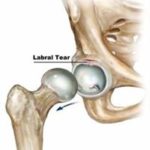How to Do Wrist Drop Exercises Safely at Home Daily?
When your hand just won’t cooperate, it’s more than annoying, it messes with everyday stuff like holding a coffee mug or typing away on your laptop. Exercises, though, are like the wake-up call your wrist needs. By training your muscles and nudging your nerves to recover, you’re giving yourself a fighting chance at restoring normal movement.
Which muscles are weak in wrist drop?
Great question! The culprits are usually the extensor muscles, the ones responsible for lifting your wrist and fingers. When these go weak, you’ll find it tricky to straighten your hand or grip firmly. Strengthening them is step one in getting back to business.
How Can You Safely Practice Wrist Drop Exercises at Home?
Alright, let’s cut to the chase. You don’t need a fancy gym membership or expensive gadgets. A little consistency, patience, and maybe a resistance band or light dumbbell will do the trick. But hey, before you dive in, always check with a physiotherapist to make sure you’re not pushing too hard.
Step-by-step safe routine:
- Wrist Extensions:
- Place your forearm on a table with your hand hanging off the edge, palm down.
- Hold a light weight (even a water bottle works).
- Slowly raise your hand upward, hold for a few seconds, then lower.
- Place your forearm on a table with your hand hanging off the edge, palm down.
- Finger Taps:
- Spread your hand flat on a table.
- Lift each finger one by one, hold, then lower.
- Repeat for 10–15 reps per finger.
- Spread your hand flat on a table.
- Grip Strengthener:
- Use a soft stress ball or rolled towel.
- Squeeze and hold for 5 seconds, then release.
- Do 3 sets of 10 squeezes.
- Use a soft stress ball or rolled towel.
- Radial Nerve Glides:
- Hold your arm out to the side.
- Flex your wrist downward while gently tilting your head to the opposite shoulder.
- This helps ease nerve tension.
- Hold your arm out to the side.
- Resistance Band Stretch:
- Wrap a band around your fingers.
- Open your hand against the band’s resistance.
- Strengthens those weak extensors.
- Wrap a band around your fingers.
Can Wrist Drop Treatment Be Done Without Surgery?
Absolutely! Not everyone needs to go under the knife. In fact, many people manage well with physiotherapy, splints, and exercises. Of course, the approach depends on the cause. If it’s due to nerve compression from, say, sleeping funny on your arm, the fix may be easier than if it’s linked to an injury.
click the link to know more about wrist drop treatment.:- (https://painfreephysiotherapy.com/what-is-the-best-wrist-drop-treatment/ )
Non-surgical wrist drop treatment options:
- Splints and braces to keep the hand stable.
- Physiotherapy sessions with targeted movements.
- Electrical stimulation therapy to wake up sluggish muscles.
- Medication if pain or inflammation is hanging around.
Lifestyle Tips That Speed Up Recovery
Sometimes, it’s not just about the exercises, it’s about how you live day to day. Little tweaks can make a huge difference.
- Avoid pressure on the nerve: Stop leaning on your elbows too much.
- Rest smart: Keep your wrist in a neutral position at night.
- Nutrition matters: Foods rich in B vitamins are nerve-friendly.
- Consistency is key: Better 15 minutes daily than an hour once in a while.
FAQs About Wrist Drop
- How long does it take for wrist drop to heal?
It varies. Mild cases can improve in weeks, while severe ones may take months. Patience pays off. - Can wrist drop heal on its own?
Sometimes, yes, especially if it’s caused by temporary nerve compression. But don’t just wait it out. Getting proper guidance speeds things up. - Is wrist drop permanent?
Not usually. With treatment, most people regain function. Permanent damage is rare unless the nerve is severely injured. - Should I keep using my hand if I have wrist drop?
Yes, but safely. Use splints or supports if needed, and keep doing those exercises. Total rest can make things worse. - Can I prevent wrist drop?
You can reduce your risk by avoiding prolonged pressure on your arms, practicing good posture, and strengthening your forearm muscles regularly.
Conclusion
At first, wrist drop can feel like a curveball life throws your way. But here’s the good news: with the right wrist drop exercises, a consistent routine, and a sprinkle of patience, you’ll likely see steady progress. Combine that with proper wrist drop treatment options, and you’re setting yourself up for a smoother recovery. Remember, your wrist isn’t broken, it just needs a little push in the right direction. Stick with it, and soon enough, you’ll be back to your regular groove. And hey, don’t get discouraged if results feel slow at first, nerve healing takes time, but every small improvement is a win.











